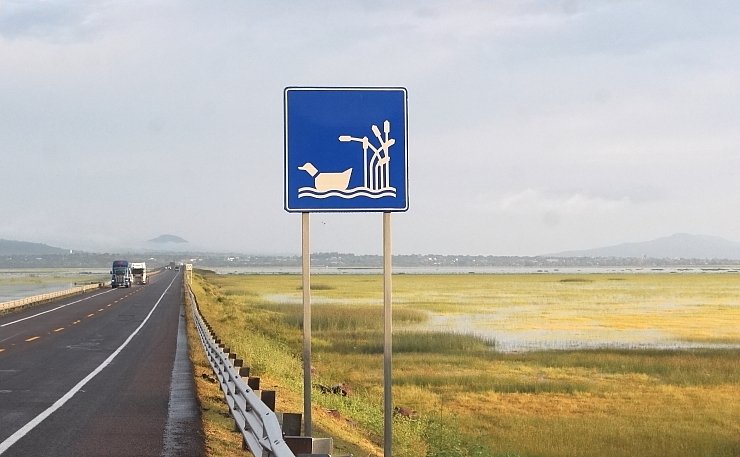
Disclaimer: Technically, Lake Cuitzeo is surrounded by mudflats, not beaches. But the return of my lake makes me a bit giddy, and I couldn’t resist using this title. Also, if you are offended by the implied word I used, please blame Sir Elton John.
I had heard recently that Lake Cuitzeo, the immense and waterfowl-rich lake north of Morelia, was making a rapid recovery as a result of our good summer rainy season. This was hard to believe, since the lake was 99% dry as recently as April, and was still only inches deep just four weeks ago. Still, the risk this wonderful habitat disappearing once again when our dry season returns this winter has made me want to take every opportunity to visit my favorite body of water, while it is around. So north I drove, one more time.
Sure enough, the lake once again looks like a lake. The eastern half, into which river waters flow first, is looking quite deep (by Lake Cuitzeo standards). And water is spilling nicely under the two highways which cross the lake, into the western half, shown in these two photos:
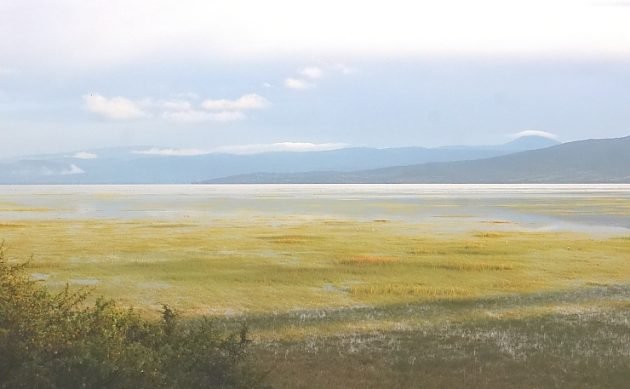
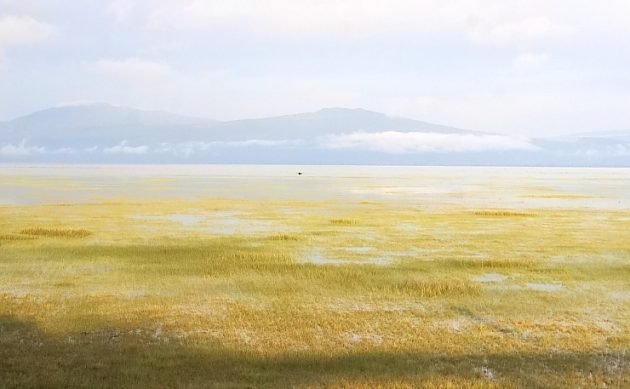
This was the scene just after dawn. That green grass is not a meadow; it is growing in water deep enough for swimming ducks. The dot in the center of the second photo is a lone Mexican Duck flying just over the water.
Even more important for my purposes, as the lake returns, so are the waterfowl and shorebirds that depend on it. Most of these are migratory species, for which Lake Cuitzeo is a vital wintering ground.
It is too early for some ducks (Wigeons, Gadwalls, and Green-winged Teals, plus Redheads and Canvasbacks with some luck) to arrive. But there were lots of Northern Shovelers, Northern Pintails, and Blue-winged Teals present, though nowhere near the thousands I hope to see in another month or two. A few resident Mexican Ducks and Fulvous Whistling-Ducks also contributed to the current mix.
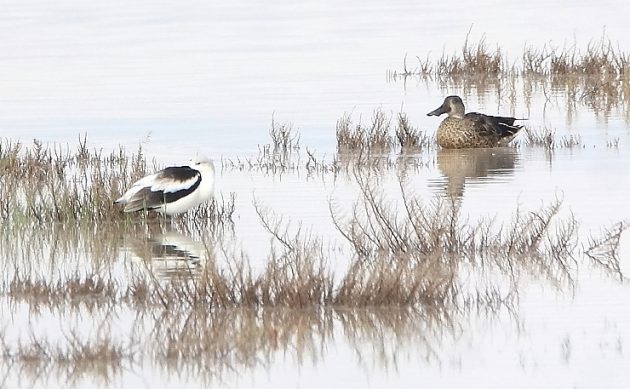
Still life with Avocet and Shoveler
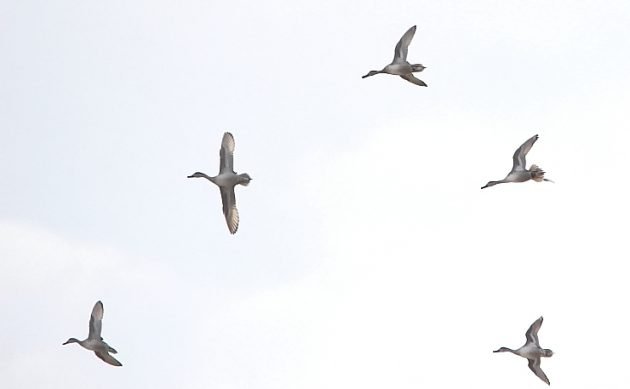
Northern Pintails, incoming.
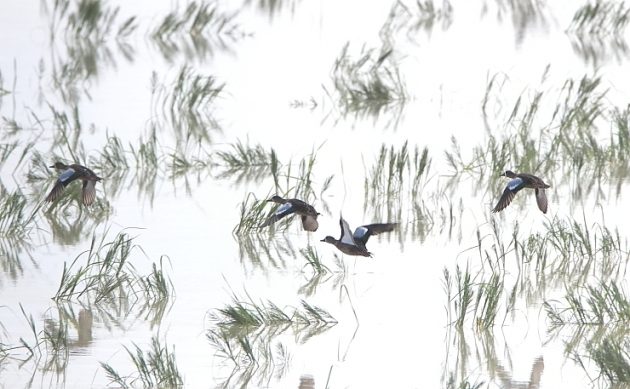
These Blue-winged Teals flying over aquatic grasses created an image that looked to me like a wallpaper design. I would buy that wallpaper.
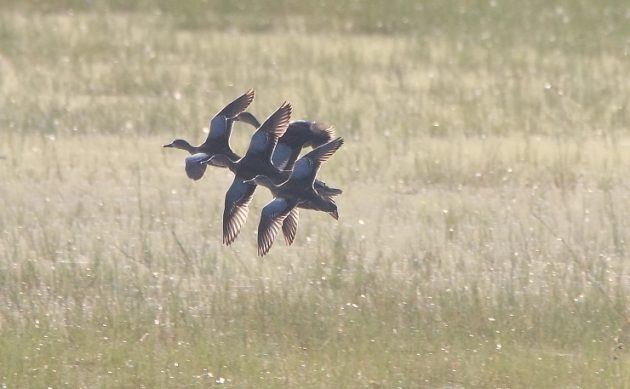
These backlit Blue-winged Teals created a very different effect, almost abstract.
I was particularly excited to see two local species that require deeper water: Ruddy Ducks and Clark’s Grebes. These birds are normally a constant presence on the lake, but because of the drought, it had been a year since I had seen the Grebes there, and a 18 months for the Ruddy Ducks. (I took so many photos on this outing that my battery ran out of charge before I finally saw the Grebes, so no photos of those.)
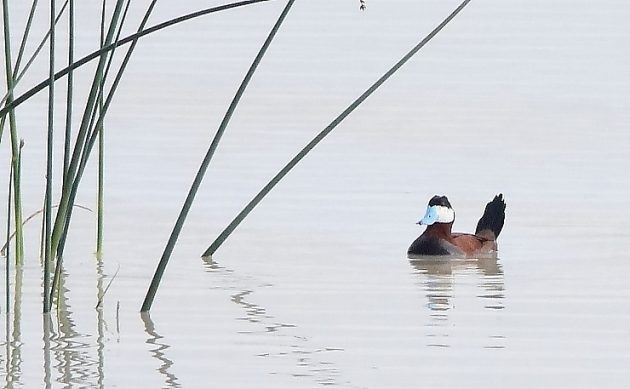
Such a thrill to get a good shot of a male Ruddy Duck, still in his summer mating finery! Their apparent pride in that blue bill and silly tail reminds me of, I don’t know, an unjustifiably over-confident early Steve Martin character?
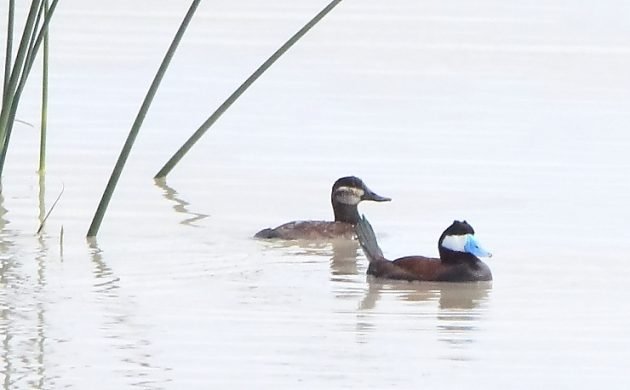
And just when I think it can’t get any better, the female decides to join the party.
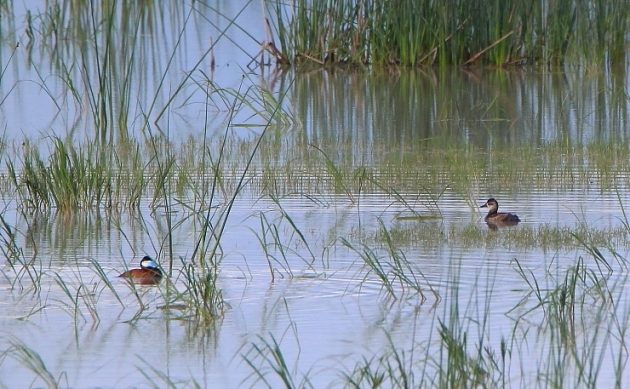
I would buy this wallpaper.
And then there were the shorebirds. Black-necked Stilts, one of the few species to stick around in small numbers during the lake’s disappearance, now seemed to be everywhere. The also-resident American Avocets are not all that numerous yet, but their numbers are rising.
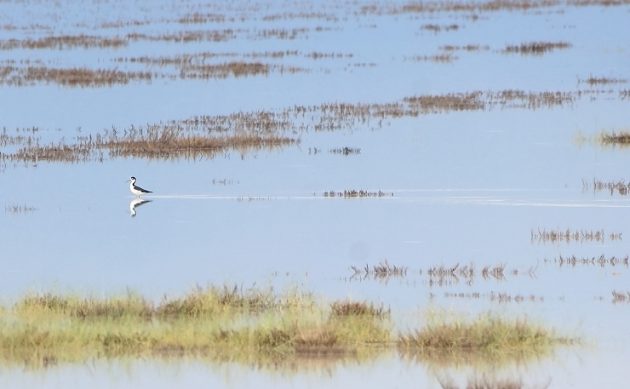
Sometimes a Stilt just has to get away for some “me time”.
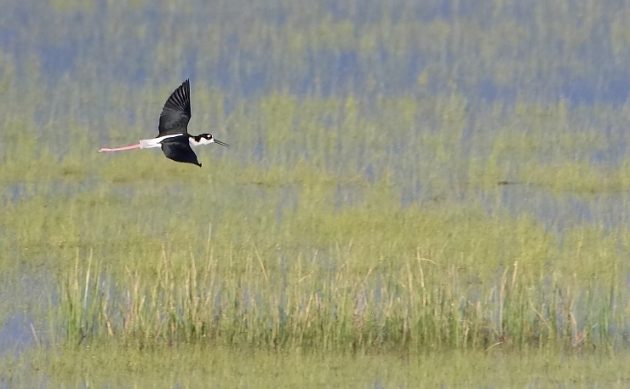
Wallpaper?
Migratory shorebirds are also starting to turn up in good numbers. The first wave, of Baird’s Sandpipers and Wilson’s Phalaropes, appear to have moved on towards their wintering grounds. But my annual struggle to distinguish Western Sandpipers from Least Sandpipers is once again fully upon me. And a few much-appreciated Semipalmated and Snowy Plovers have also returned. (In good years, some Snowy Plovers breed on this lake, but I only saw a handful there over the past year, all around the one section that did not quite dry up.)
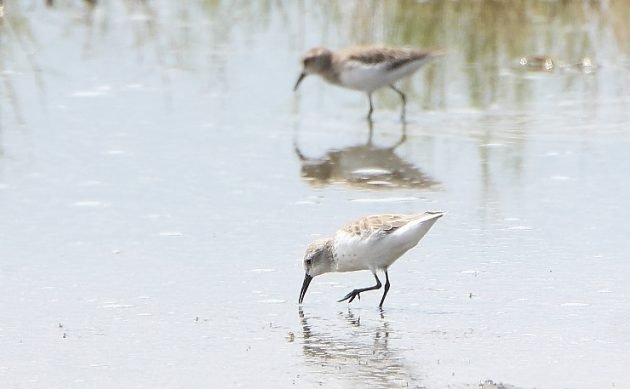
This is a money shot: the legs on the Western Sandpiper in the foreground are clearly black. The shorter bill, darker breast, and apparently yellow legs on the unfocused bird in the background suggest a Least Sandpiper.
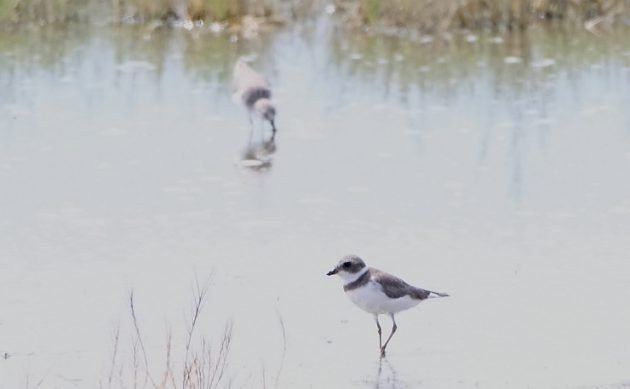
Semipalmated Plover
One small shorebird was quite a surprise. Sanderlings are relatively rare visitors to the lake, preferring to spend their winters running among coastal waves. This lone Sanderling had only one leg, so it had to hop rather than run. And I would have thought its missing leg would have made it more cautious than a two-legged bird, but it seemed comfortable with being closer to me than any other Sanderling in my memory.
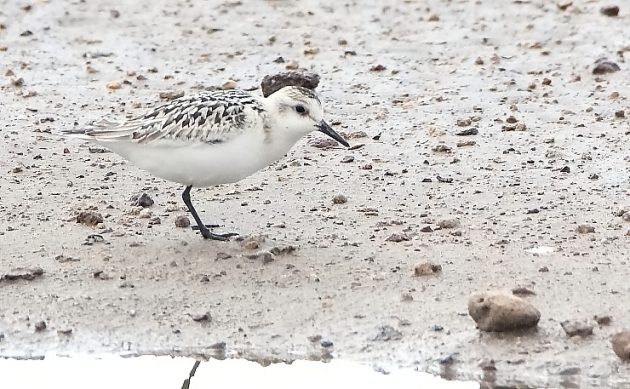
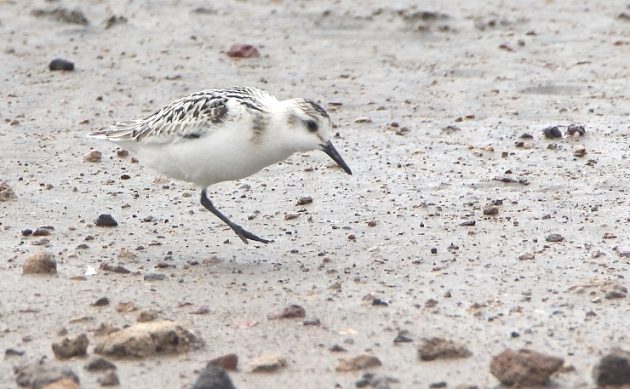
Hop, little one-legged Sanderling, hop!
It’s great to get back to the sort of outing that leaves me with too much to write about. But I’ve already gone on quite a lot, so I’ll limit myself to one more point, that illustrates the value of working the same spot for several years. I once believed that the large groups of medium-sized shorebirds on the lake were made up only of Long-billed Dowitchers. And while that species is indeed found on the lake, I am now finding that many, perhaps most, are actually Stilt Sandpipers. Since the two species are hard to tell apart, I’ll be carefully studying my photos from now on. This time, at least, the Sandpipers were much more abundant than the Dowitchers.
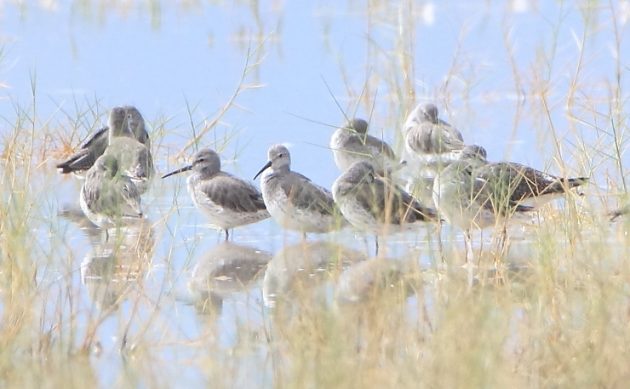
The Stilt Sandpiper has a slightly shorter bill, with an odd drooping tip, that gives it away.
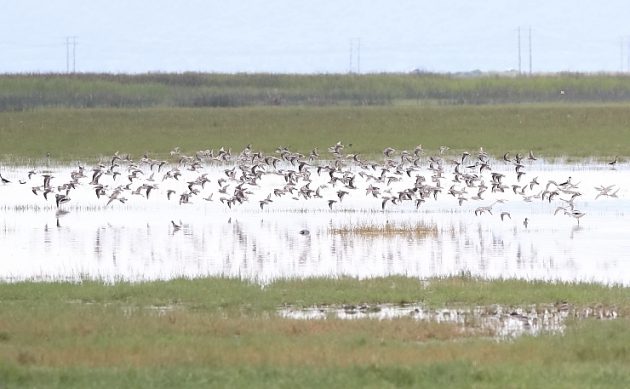











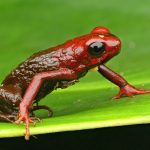
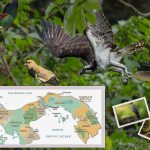
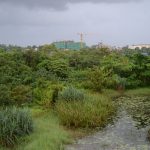
Nice post, Paul! I would buy several of your wallpapers.